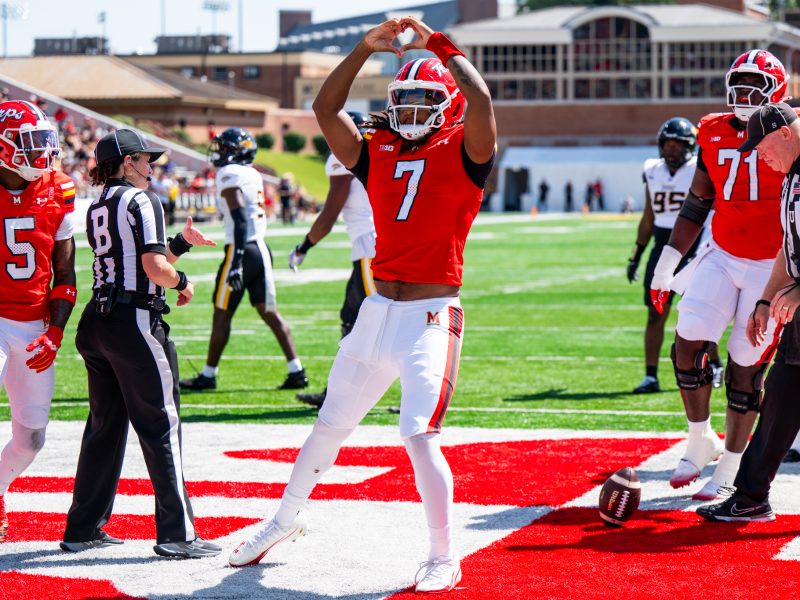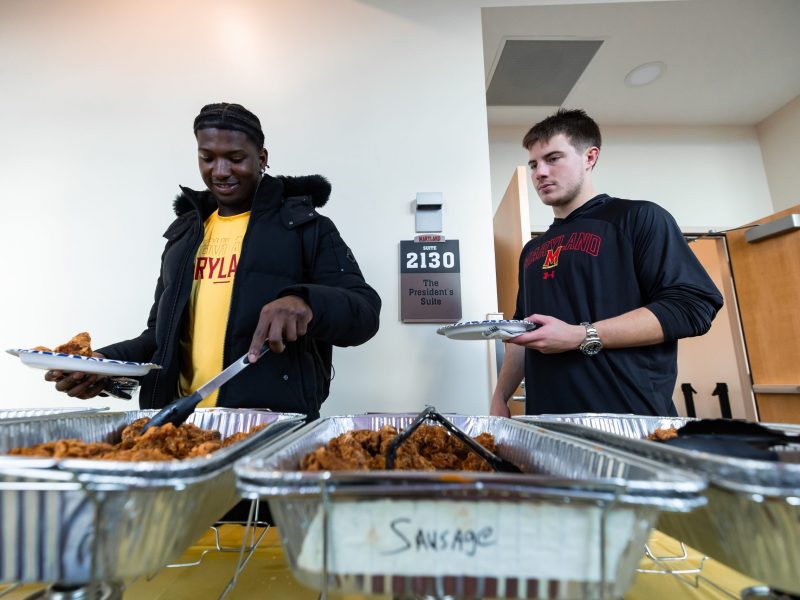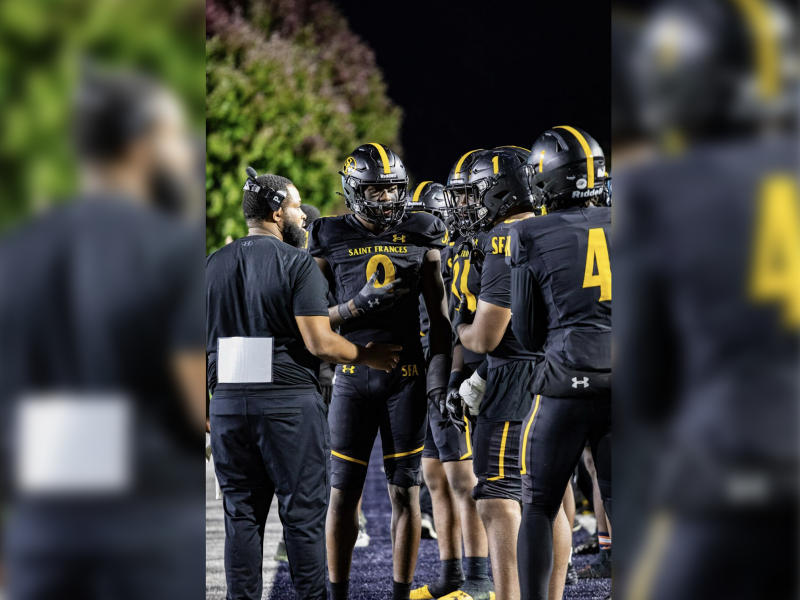Billy Edwards Jr. was one of the lone bright spots through the first half of a turbulent season for Maryland football. But the quarterback’s play has significantly regressed over the past month and endured another poor outing at home on Saturday.
In a game where the Terps’ defense struggled against Rutgers, Edwards did them no favors. That included a costly fourth-quarter interception that thwarted Maryland’s chances of a comeback. It fell 31-17.
Including Saturday, Edwards has played like one of the worst quarterbacks in the Big Ten over the Terps’ (4-6, 1-6 Big Ten) past three games. He’s thrown five interceptions to just two touchdowns, averaging 5.5 yards per attempt with a meager 54 percent completion rate.
Coach Michael Locksley crowned Edwards as one of the best quarterbacks in the country earlier this season as the redshirt junior appeared to have seamlessly replaced Taulia Tagovailoa.
But playing as a starting quarterback for an entire year is drastically different from a stretch of games. Saturday was a continuation of that hardship for Edwards. While he didn’t turn the ball over and threw an excellent first-half touchdown pass to Tai Felton, the outing wasn’t as clean as his ones from earlier in the campaign.
“Some of [the interceptions] are on the quarterbacks, some of it’s on the receivers being where they need to be and then some of it’s on protection,” Locksley said. “Quarterbacks get a lot of credit, but they also get a lot of blame.”
[Chasing bowl eligibility, Maryland football views every week as a playoff game]
Edwards looked jittery in the pocket, afraid of pressure that’s attacked him this year. He missed open receivers, including two overthrows to Felton on a critical third-quarter drive and a fourth-quarter interception.
With better quarterback play, Maryland could’ve topped Rutgers (6-4, 3-4 Big Ten) and moved closer to bowl eligibility. Instead, it’ll need to win two straight to close the regular season.
Edwards’ yards per attempt on Saturday was below six yards for the third straight contest. The game prior, a win over USC, was the last time Edwards has made what Pro Football Focus defines as a big time throw — “a pass with excellent ball location and timing, generally thrown further down the field and/or into a tighter window.”
Two early interceptions from Edwards against Minnesota, including one that Locksley called a bad decision, killed the Terps’ winning chances. Edwards followed that performance with three turnovers versus Oregon. Locksley said after that game he needed to protect the ball better.
“The thing I’d like to see Billy do is some of the accuracy passes, the balls that when we have a chance to complete them, we’ve got to make those plays,” Locksley said after the Rutgers loss.
[Unlikely fans have their eyes set on Maryland football with conference realignment]
This season’s struggles aren’t all on Edwards — he’s been one Maryland’s better players for a majority of the year. Tai Felton, who broke the program’s single-season receptions record and surpassed 1,000 receiving yards on Saturday, has repeatedly praised his quarterback.
Edwards has attempted the most passes in the Big Ten. That’s come with grave mistakes at times. Tipped passes have been a repeated issue all season and it essentially ended the Terps’ hopes on a fourth-down pass with 8:30 remaining in the fourth quarter.
“I don’t think [the passing attack] has regressed as much as us not executing as much as we can,” running back Roman Hemby said.
Maryland’s defense didn’t step up when needed. Defensive coordinator Brian Williams’ unit allowed 31 points to Rutgers, who averaged 25.8 points per game entering Saturday.
Locksley has had success against the Scarlet Knights. The Terps have defeated Rutgers the past three seasons by an average margin of 26 points. But they were outclassed at home in a matchup that Locksley called a “playoff game.”
“We’re running out of chances and opportunities,” Locksley said.
The result isn’t a surprise given how Maryland’s looked over the course of the season. This type of performance has been the standard in 2024.



